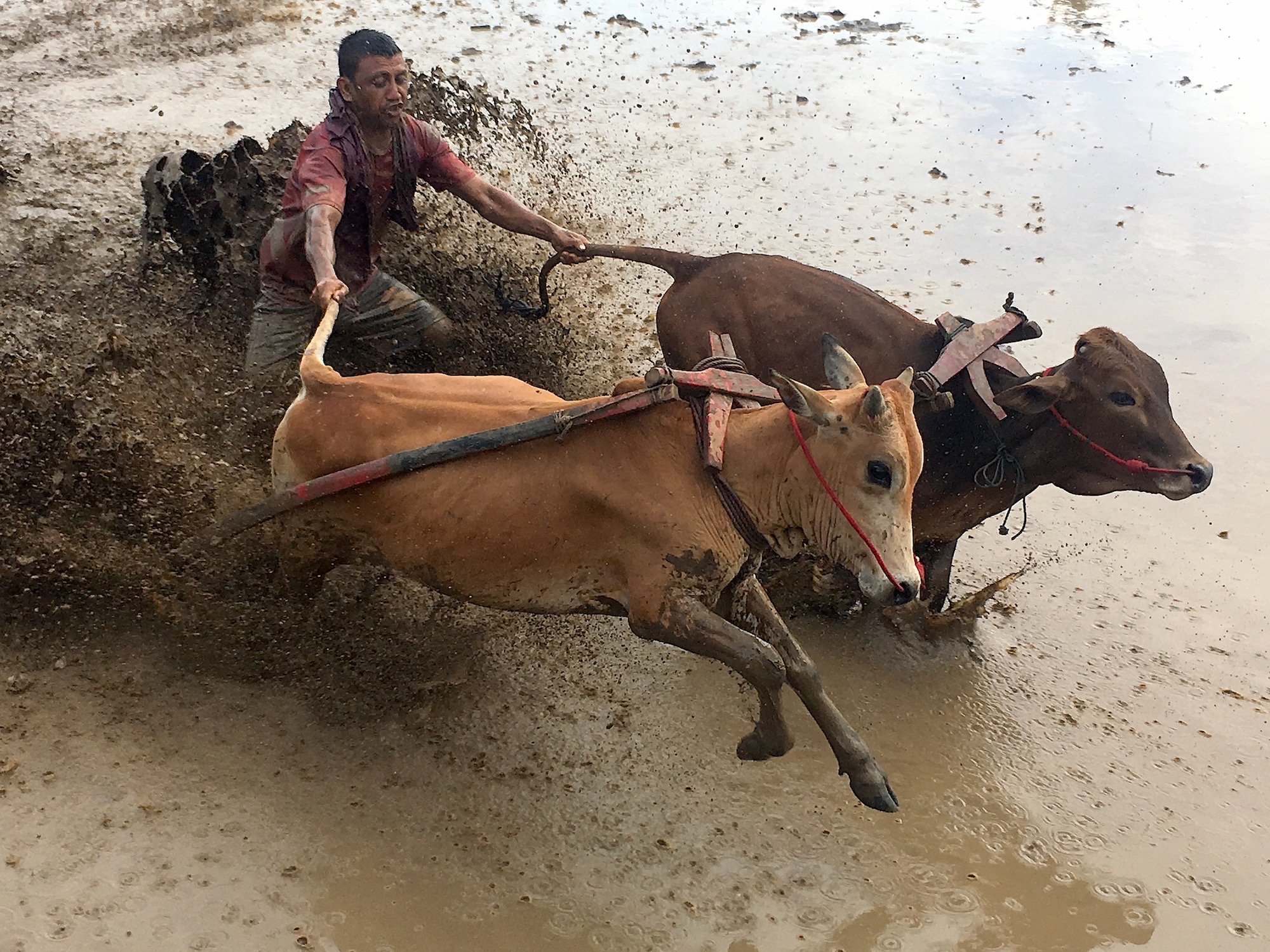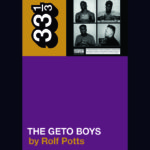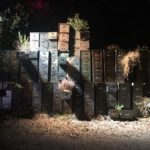One of the strangest and most fascinating spectacles I’ve witnessed here in equatorial western Sumatra is “pacu jawi” the harvest-festival cow races that the Minangkabau people have been staging each year for more than a century.
The Minangkabau have a unique and faintly reverent relationship with bovines – their name literally translates to “buffalo champions” (an allusion to a key tribal myth), and the steep, pointed roofs on their traditional homes are said to symbolize buffalo horns. Legend has it that at one time the Minangkabau raced buffalo, though in recent memory the tradition has been to race cows during the festival season after harvest and before planting. The event is sort of a mash-up of Thanksgiving, a rodeo, and a county fair.
Contrary to what I initially assumed, pacu jawi is not a test of skill and machismo for the Minangkabau cow-jockeys. Rather, it is an event that aims to showcase the health, strength, and obedience of draft-cattle for the market. A good performance fetches a higher market price for the cow – and judges keep an eye out for speed, straightness of route, and the ability to work in tandem with another cow. Whereas the average beef cow in Sumatra sells for around $600, the best pacu jawi performers can fetch more than $4000 at the market.
 The cattle teams don’t race each other; they make individual runs, in teams of two, across a flooded rice paddy a slightly smaller than the size of a football field. The racing plows are made from bamboo rather than wood to enable high speeds (some draft teams can reach 20 miles an hour) and ensure safety. Jockeys grip the cows by the tail and stand/steer using curved wooden rails at the base of the bamboo plow. Unlike in the West there is no whip or lash; rather the jockeys urge to cows to run faster by biting their tails. The cow aren’t tethered together, and the less disciplined teams tend to run in different trajectories, pulling the jockeys into leg-splits or muddy wipeouts (much to the delight of the crowd).
The cattle teams don’t race each other; they make individual runs, in teams of two, across a flooded rice paddy a slightly smaller than the size of a football field. The racing plows are made from bamboo rather than wood to enable high speeds (some draft teams can reach 20 miles an hour) and ensure safety. Jockeys grip the cows by the tail and stand/steer using curved wooden rails at the base of the bamboo plow. Unlike in the West there is no whip or lash; rather the jockeys urge to cows to run faster by biting their tails. The cow aren’t tethered together, and the less disciplined teams tend to run in different trajectories, pulling the jockeys into leg-splits or muddy wipeouts (much to the delight of the crowd).
As with American rodeos, pacu jawi events double as community festivals in the Minangkabau region of Sumatra. Temporary food-stalls, market kiosks, carnival rides, and music tents are erected on one side of the racing paddy. Families from different Minangkabau towns socialize, kids run all over the place, and young adults hang out in packs and flirt with one another (indeed, countless Minangkabau claim to have met their spouse at a pacu jawi event).
On the day I attended folks were in high spirits, tickled to see an outsider in attendance; I eventually lost count of how many selfies I was asked to pose for (yes, many Minangkabau have smartphones, and they’re just as obsessed with them as Americans are). When the races were winding down I was cheerily bullied into banging a small kettle-gong with a bunch of old men playing “talempong,” a traditional form of Minangkabau percussion music. I wasn’t very good at it, but I think that was the point. Folks in the music tent had an uproarious time watching me try to keep rhythm on the little gong: I felt totally awkward and utterly welcome at the same time.
It was a good day.
H/T to Greg Rodgers, for tipping me off about this remarkable event (be sure to check out his blog report from the 2017 event).
Note: “Dispatches” are short vignettes, profiles, and mini-essays written and posted from the road, often in tandem with my Instagram account. For more full-formed writing, check out my book Marco Polo Didn’t Go There, or the Essays or Stories archives on this site. I don’t host a “comments” section, but I’m happy to hear your thoughts via my Contact page.







